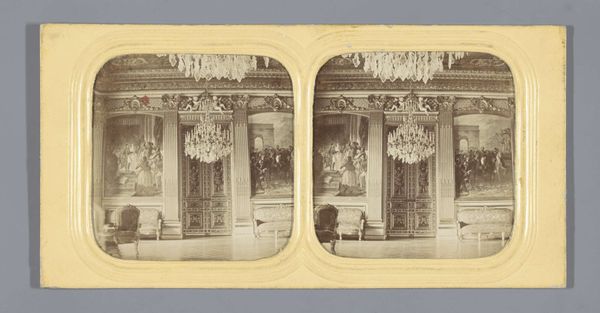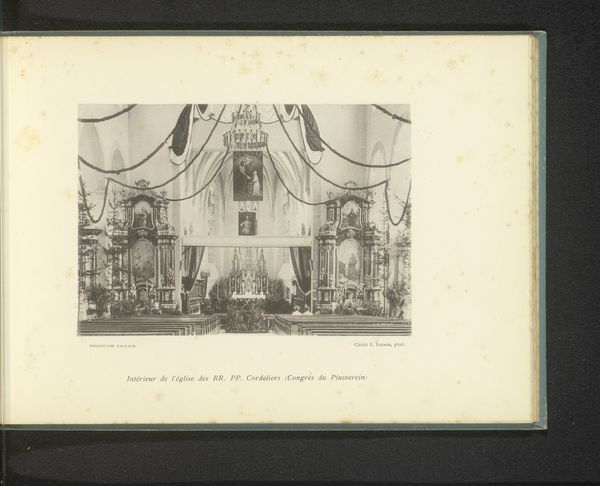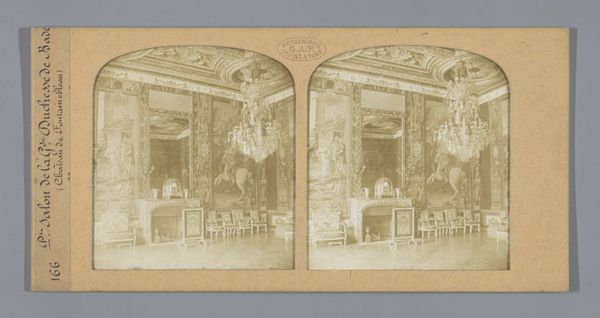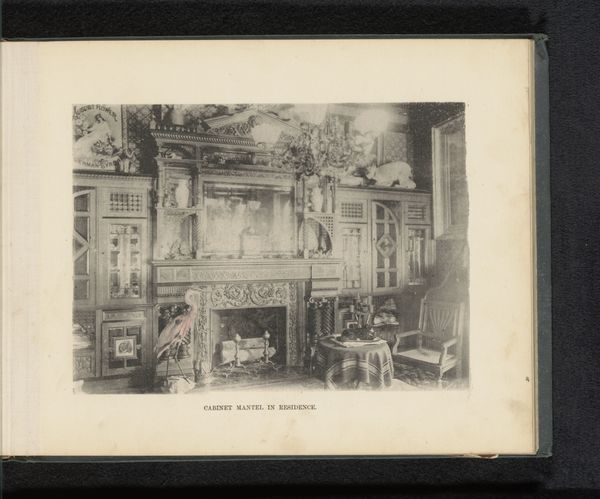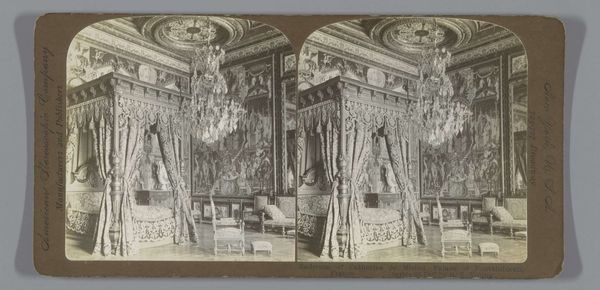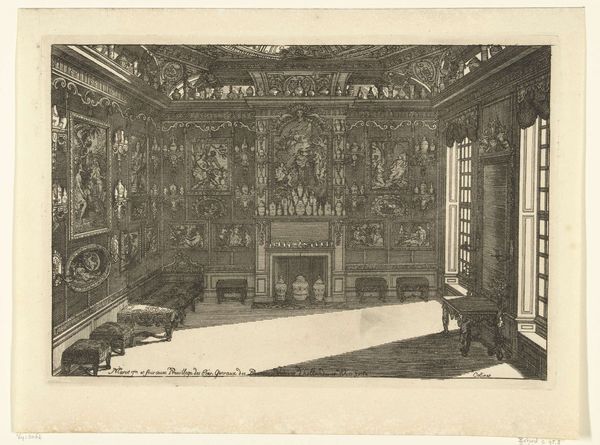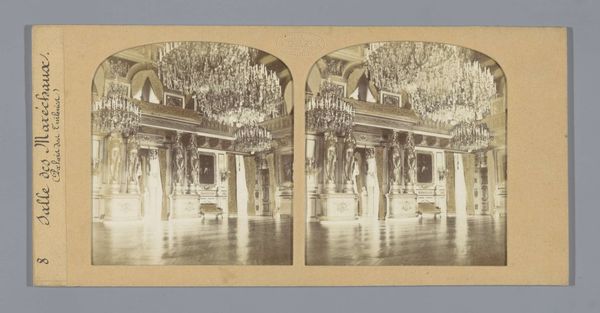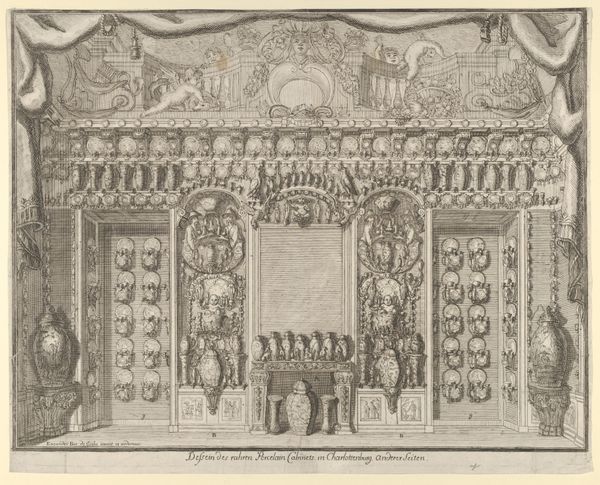
Interieur van de Salle des Marechaux in het Palais des Tuileries te Parijs before 1871
0:00
0:00
print, photography
#
portrait
# print
#
photography
#
coloured pencil
#
genre-painting
#
history-painting
Dimensions: height 85 mm, width 170 mm
Copyright: Rijks Museum: Open Domain
Editor: This is "Interieur van de Salle des Marechaux in het Palais des Tuileries te Parijs," believed to be made before 1871 by Ernest Eléonor Pierre Lamy. It’s a print based on a photograph, and the ornate room is overwhelmingly symmetrical. What story do you think it tells? Curator: I see this not merely as an interior scene, but as a document deeply implicated in the politics of its time. This photograph, produced before the destruction of the Palais des Tuileries in 1871, stands as a visual testament to the opulent spaces of power occupied by the French monarchy. Editor: So, it's not just a pretty picture. Curator: Exactly. It captures the visual language of imperial power, the visual rhetoric designed to convey legitimacy and permanence. What does this kind of controlled, symmetrical opulence tell us about the power dynamics and the political vulnerabilities inherent in such displays of dominance? Editor: Vulnerabilities? I wouldn't have thought of it that way. Curator: The very existence of this photograph, taken just before the palace was destroyed, highlights the transient nature of power. The meticulous detail – the chandeliers, portraits, meticulously arranged furniture – all speak to a desire for order and control, a desire often contradicted by the volatile realities of political life. Does understanding that context change your reading of the piece? Editor: It really does. I was just seeing a fancy room, but now I see a symbol on the verge of collapse. Curator: And what does that symbolism suggest to you about the role of art – in this case, photography – as a witness to history and a potential catalyst for social change? Editor: It feels like a stark reminder that even the most powerful symbols are fragile, and that art can play a crucial role in recording and critiquing power. Thank you! Curator: My pleasure. Considering the photograph’s social and historical context allowed us to dig deeper and appreciate the work on many different levels.
Comments
No comments
Be the first to comment and join the conversation on the ultimate creative platform.

